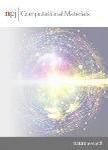Conversion of twisted light to twisted excitons using carbon nanotubes
作者机构:Applied Physics ProgramPhysical Sciences and Engineering DivisionKing Abdullah University of Science and Technology(KAUST)Thuwal23955-6900Saudi Arabia Department of PhysicsKhalifa University of Science and TechnologyAbu Dhabi127788United Arab Emirates Department of PhysicsColorado School of MinesGoldenCO80401USA
出 版 物:《npj Computational Materials》 (计算材料学(英文))
年 卷 期:2022年第8卷第1期
页 面:392-402页
核心收录:
学科分类:07[理学] 070205[理学-凝聚态物理] 08[工学] 080501[工学-材料物理与化学] 0805[工学-材料科学与工程(可授工学、理学学位)] 0702[理学-物理学]
摘 要:Carbon nanotubes are explored as a means of coherently converting the orbital angular momentum of light to an excitonic form that is more amenable to quantum information *** analytical analysis,based on dynamical conductivity,is used to show that orbital angular momentum is conserved,modulo N,for a carbon nanotube illuminated by radially polarized,twisted *** result is numerically demonstrated using real-time time-dependent density functional theory which captures the absorption of twisted light and the subsequent transfer of twisted *** results suggest that carbon nanotubes are promising candidates for constructing optoelectronic circuits in which quantum information is more readily processed while manifested in excitonic form.



